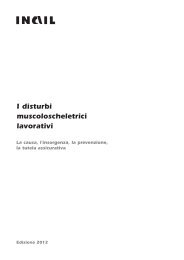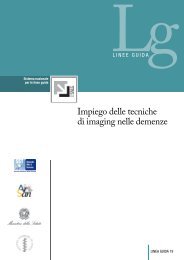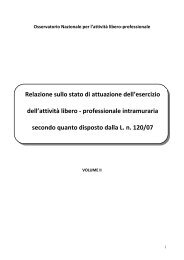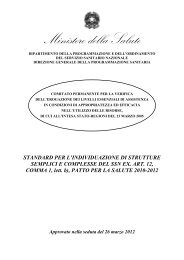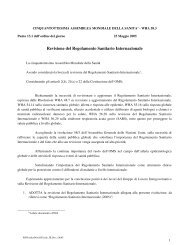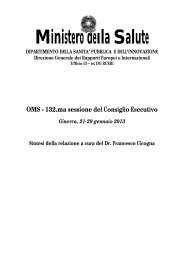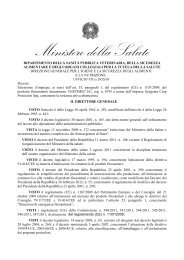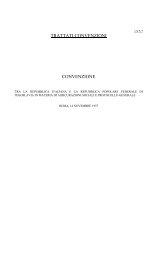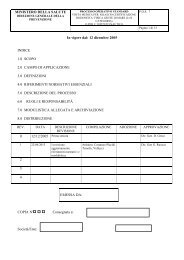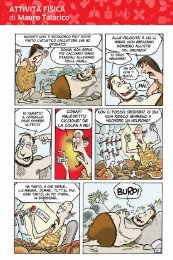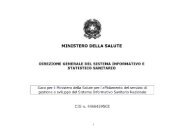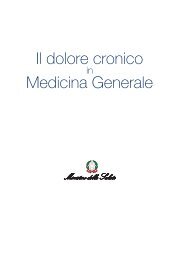hta_ knee intro.qxp - Ministero della Salute
hta_ knee intro.qxp - Ministero della Salute
hta_ knee intro.qxp - Ministero della Salute
You also want an ePaper? Increase the reach of your titles
YUMPU automatically turns print PDFs into web optimized ePapers that Google loves.
8. Economic model and cost-effectiveness analysis of<br />
<strong>knee</strong> prostheses<br />
8.1 Introduction<br />
Having estimated costs of prostheses and their effects on the basis of available data on prices<br />
and implant survival rates, in this chapter we will estimate the incremental cost-effectiveness of<br />
prosthesis which we are certain are bought and used in Italy. We will adopt the perspective of the<br />
INHS to construct our economic model. This is a narrower perspective than a societal perspective<br />
but it is consistent with that of our commissioners the Ministerial Committee on Medical Devices<br />
(CUD – Commissione Unica Dispositivi medici). Another reason for assuming the INHS perspective<br />
is its simplicity. In a country in which routine good quality data is not easy to retrieve, our model<br />
can furnish a useful and quick means of carrying out a “macro stratification” of prostheses (or any<br />
other implantable device) by selecting firstly those for which data are available, then those for<br />
which data are available from different sources, then those for which these data can be combined<br />
into cost-effectiveness ratios. Although imperfect, because of the attrition of data due to different<br />
reasons (see discussion at chapter 9), this simple model is better than no model or basing decisions<br />
on prostheses cost alone. A more accurate model would be based on a complete list of TKR<br />
prostheses available in Italy, 100% coverage of regional purchasing prices of all prostheses and<br />
effectiveness estimates (for example implant survival rates) based on prospective nominal cohorts<br />
of recipients. Nominal cohorts would have a numerator identifying each recipient by name and<br />
prosthesis model. This would allow active follow-up up of each recipient for a period of 5 to 10<br />
years. Active follow up would entail longitudinal monitoring. This in turn would ensure that attrition<br />
(i.e. to loss to follow up such as deaths) would impact on the survivors and the cohort would<br />
get smaller with the passing of time. The cause for each loss would have to be investigated and<br />
its relationship with the implant and its insertion assessed. The magnitude and resource necessary<br />
for such a sophisticated methodological approach is quite beyond the resources available to any<br />
of the registers we identified and its utility, beyond theory would have to be demonstrated.<br />
8.2 Methods<br />
We stratified all prosthesis by classes (see chapter 5) and identified price and revision rate for<br />
each. The data are taken from those in Tables 5.5 and 7.17 respectively. We calculated the<br />
implant survival rate (as 100 - revision rate) to calculate the Incremental Cost Effectiveness Ratio<br />
(ICER) in 2009 Euros. Direct costs of each implant (i.e. those accruing to the INHS) are thought<br />
to be similar within prosthesis design classes. For this reason we did not incorporate them in our<br />
comparisons. For each prosthesis we calculated the ICER expressed as an incremental cost per<br />
revision avoided over a 5-year period. ICERs synthesises the relation between the cost of each<br />
prostheses and clinical effectiveness compared with each other.<br />
51



